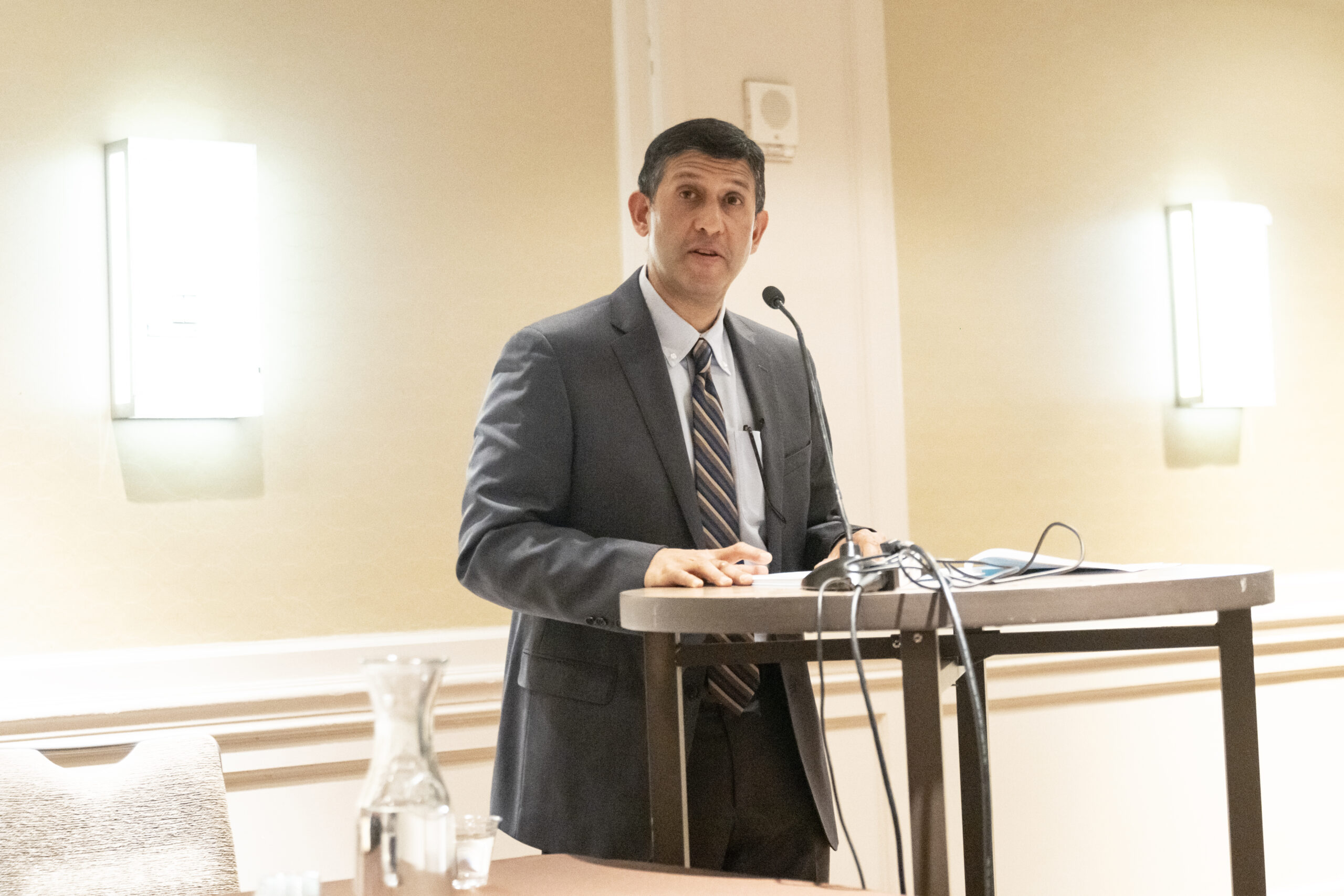The Nature of the Crisis
During this academic year of 1971–72 it looks as though the historical profession may be turning out at least three times more PhDs than there are teaching jobs available in four-year colleges, for which a PhD presumably prepares students. At the AHA convention in New York in December 1971, 2300 students were chasing a mere 155 jobs on the Professional Register. There can be little doubt that the total number of jobs available this year must be somewhat, perhaps considerably, more than 155, but even if there are as many as 300, the number of PhDs produced this year is over 10001 and still rising. It therefore looks as if the annual output of Ph.D’s may exceed available jobs in four-year colleges by at least 700 students, or two-thirds of the total. These calculations take no account of the backlog from previous years of those unemployed, or unsuitably employed, who are still looking for jobs commensurate with their qualifications.
The Causes of the Crisis
The expansion in the number of PhDs has been brought about by the ambitions of both university administrators and faculties to enlarge old graduate programs and to start new ones, often without much thought for the quality of the training provided or for the long-term career prospects of the students. Several years ago Professor Cartter prophesied the current employment crisis, but his jeremiads were totally ignored. Since he has ably analyzed the causes of the shrinkage of the market, there is no need to repeat his explanations here. But it is worth pointing out that some socially and ethically desirable policies are actually making the job situation worse rather than better. Thus in order to make up for the shrinkage in fellowship funds, many institutions are offering more assistantships in instruction to provide funds for their students to stay in school and finish their doctorates. But the more A.I.’s are created, the fewer jobs at the assistant professor rank are needed. Similarly, all institutions are .belatedly trying to increase their quotas of women and blacks. The inevitable result is that fewer jobs are available for white males. This is not to say that the policies are wrong—they are clearly right—but that the results tend to exacerbate an already desperate situation.
This shrinkage of jobs in four-year colleges would not matter so much if alternative career opportunities were easily available. But PhDs are finding that the possession of a doctorate in history is not merely no advantage in the job market outside four-year college teaching, it is a positive handicap. Schools, businesses, banks, even community colleges think that a person with a PhD is over-trained, over-specialized, and likely to be discontented and therefore inefficient in some other employment. Publishing is in decline, the federal government is not expanding, both library work and school teaching require specialized qualifications of their own. The man or woman with a PhD in history is now finding that he has disqualified himself for almost every job that society has to offer outside the four-year college. Some placement offices are now advising graduates to conceal the fact that they possess a doctorate in history when they go looking for jobs.
Finally, if Professor Cartter’s forecasts are correct, and there is no reason to think they are wrong (he has been right once), the situation is not going to change in the next decade, and it may even get worse.
Reactions to the Crisis
It has to be recognized that both faculty and administrators have a strong self-interest in keeping enrollment at about the present level, the latter in order to maintain the reputation of their institution, and the former since they regard it as more prestigious and more interesting to teach graduate students in seminars than to teach undergraduates in classes. For some of them, a reduction in enrollment might mean less attractive teaching, salary cuts, and possibly even redundancy.
It is certainly possible that students will cease to apply to enroll in graduate schools in the same numbers as during the ‘6os. The alternatives are also unattractive. Law schools and medical schools are now overwhelmed with applicants, and may shortly be facing the same crisis of over-production themselves. As long as the economy remains sluggish, and the bias among many undergraduates against business remains at the present level, it seems unlikely that students will turn to careers in corporate industry or commerce. The decline in enrollment in graduate schools, if it occurs, is therefore unlikely to be on a sufficient scale, or to happen sufficiently quickly, to solve the crisis. All it may do is reduce the ratio of applicants to admissions. In consequence it is very unlikely that the free operation of the laws of supply and demand will reduce enrollments to match ap propriate job opportunities, except in the very long run, and at an enormous cost in terms of ruined careers and useless investment of time and money by many hundreds and perhaps thousands of graduate students over the next decade.
It therefore seems reasonable to assume that for the next decade the number of aspirants for a doctorate in history will remain in excess of the capacity of the profession to absorb them. If this is true, disappointment faces very many of these students at one stage or another in their careers. It may occur before he begins, by being denied enrollment in a graduate school; or after the first year or two, by being rejected through an increasingly stiff process of competitive selection. Or it may happen after he has completed his doctorate, when he suddenly finds that the profession has no use for his services. Or, worst of all, it may happen after three to six years of teaching, when he is thrown out into a cold world to face a very grim and uncertain future. This last may well become a common experience, as institutions try to economize by hiring relays of junior staff and firing them as the time for a tenure appointment approaches.
There cannot be any doubt that the inevitable disappointment ought to occur as early as possible, and preferably before career training is embarked upon. But to achieve this will require both courage and planning on the part of the profession. It will not happen by itself. For the faculty, the easy way is undoubtedly to continue to enroll large numbers of graduate students, and to go on helping them proceed towards a doctorate, without worrying too much about what the future holds in store for them. This is a solution which maintains the faculty in its present enhanced position, but it is not right, for it does serious long term harm both to the students and to the profession.
In practice, what seems to be happening is the creation of the very worst of all possible worlds. Sharp reductions in enrollment have so far taken place by administrative decision rather than by student choice, and have occurred in the most intellectually distinguished institutions which offer the best professional training, such as Harvard, Yale, and Cornell. Both faculty and administration in these universities have acted responsibly, but many of the big state institutions are still trying to keep numbers up, and the minor institutions are obstinately refusing to allow their new little programs to wither away. If applications for enrollment were seriously to decline, these institutions could only maintain numbers by reducing standards, with all that that implies for the future of the profession. There is thus a serious possibility that this year much the same number of students are enrolled in history departments throughout the country, but that a smaller proportion of them are in the strongest programs. If so, this is the road to professional disaster.
The current situation does not merely bring personal tragedy to the many individuals involved, whose lives are perhaps permanently blighted. For several reasons, it also threatens the health of the profession. In the first place the failure of most institutions to cut back reflects an egotistical blindness on the part of the faculty, which brings discredit upon the profession as a whole. Secondly, the present pattern of reduction· in enrollment is affecting the strong rather than the weak. This is the reverse of eugenics. Thirdly, radical solutions are being aired, which threaten professional standards. There is talk of unionization, curbs on salaries at the top, enforced retirement at an early age, compulsory part-time employment, and the abolition of tenure. These are all measures that might provide a little temporary relief to job seekers, but only at the cost of damage to scholarship.
The Role of the AHA in the Crisis
The AHA can play an important role in easing the crisis, if it is prepared to turn itself from a loose association of scholars with common interests into a fully fledged professional body. No one likes the idea of using mandatory accreditation procedures in order to reduce intake. It is a weapon which has been used by more than one body in order to raise salaries by keeping the profession below the optimum size to meet social needs. But in this case the self-interest of the profession favors the maintenance of numbers and artificial restriction is the policy of altruism rather than self-seeking and greed. In any case the crisis that faces the history profession today is so acute, and adequate. voluntary self-regulation is so unlikely to happen, that some form of pressure from the organized professional body seems essential.
I therefore put forward the following proposals:
- The AHA should establish a strong and widely representative committee to set standards for the proper requirements needed for a PhD program. This committee should have no powers of compulsion, but it should actively seek to advise state legislatures on:
- The optimum size of enrollment that an individual institution should aim for, given the size of its faculty and its financial resources, and the size of the prospective job market. In other words it should be prepared to advise a state legislature to reduce funds for a department which insists on enrolling exorbitant numbers of graduate students each
- Those programs which, on the basis of the size of the library, the size and qualifications of the faculty, the amount of fellowship aid, and the number and quality of students enrolled, should be closed down as soon as
It is to be presumed that state legislatures would listen closely to such advice, particularly since they are always looking for ways to save money on the higher education budget. The result of such a policy would be to eliminate altogether many of the numerous small and inferior Ph.D. programs which have sprung up, largely for prestige reasons, in the last ten to fifteen years. It would also lead to a reduction in the size of some of the enormous programs which currently admit 100 or more students each year. Private universities arc not subject to budgetary controls by the states, but it seems likely that adverse publicity would bring them to conform to what the profession considers reasonable. It also seems likely that the federal government would listen closely to professional advice in determining the scale and distribution of fellowships and loan money for students.
We owe it to posterity to see that the outcome of the current crisis ·is a more distinguished and more vital profession, not one which has merely crippled its finest institutions, and blasted the hopes of its aspirants. These proposals would result in a form of academic contraception which would eliminate the weak, and not emasculate the strong. They would also result in a general raising of the standards of entry into the profession.
Two possible objections to this proposal concern its legality and its cost. How serious they are is at present quite unknown. The sensible approach is not to give up in despair, but to undertake a careful investigation of both issues. The fact that chemists, engineers, physicists, and mathematicians are currently also discussing similar proposals suggests that the demand for action is so widespread that these obstacles may not in the end prove insuperable.
- The AHA should establish a second powerful and widely representative committee to investigate the desirability of recommending the creation of a national degree other than the PhD, designed for those who are planning to become college teachers rather than scholars. The DA degree offered by some universities, and the MPhil offered by Yale are prototypes worth investigating.
It is said that only 30 per cent of all PhD ever publishes. The number who publish anything more than their thesis or parts of it must be much smaller, maybe 5 per cent. The number who make a real contribution to scholarship must be smaller still. And yet we force all students who aspire to teach in a four-year college to spend three to six years in undertaking a piece of original research. This seems to be a wholly irrelevant exercise for the majority of prospective professors. There must be a better way of training college teachers, as distinct from scholars, and the AHA should take the lead in finding it.
Note
- There were 1092 recipients of the PhD degree in history in 1969–70. See National Research Council, Office of Scientific Personnel, Doctorate Records File; published in Summary Report 1970: Doctorate Recipients from United States Universities, OSP-MS-4 (National Research Council, Mar. 1971). [↩]
Lawrence Stone
Princeton University


